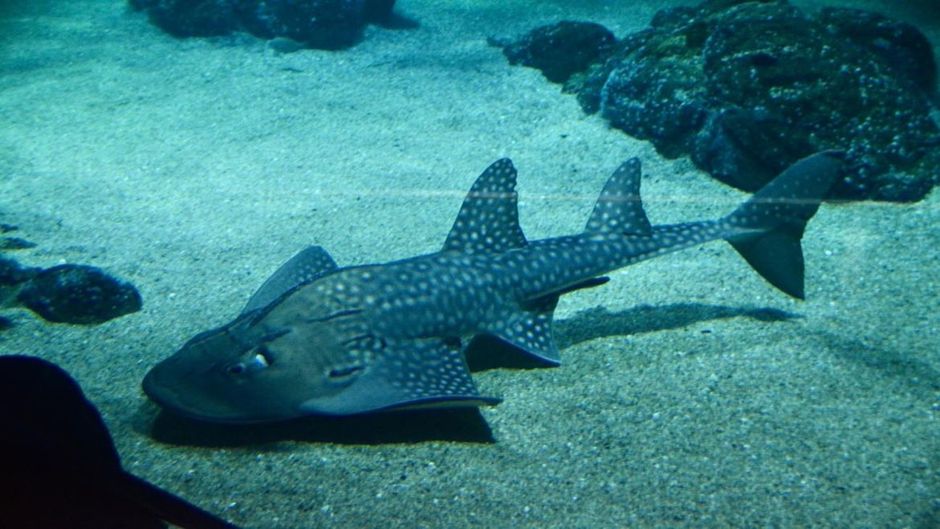The shark has built-in software to know when to change direction, how to hunt a particular prey, escape a predator, among many other actions.
 Photo: Antonio Cruz.
Photo: Antonio Cruz.
One of the greatest mysteries surrounding ichthyology (the science which studies fish) is how they orientate themselves in water.
Some species considered primary are even known to be able to swim in a straight line, in total darkness, and without deviating in the slightest, across vast oceanic distances.
In general, it has been shown that the sense of smell organs of fish are astonishingly complex. In the reduced space of their nasal cavities there is a set of chemical receptors which are so sensitive to smells that it would be extremely difficult to n on any other information technology network
In a scientific article published in the magazine PLOS ONE, the sense of smell was shown to be very widely distributed also among aquatic creatures, even among elasmobranch fish such as sharks1.
Apparently, the chemical signals present in the water also serve to orientate fish in the pelagic environment. This was already known to be the case with teleost fish such as salmon, but it had not yet been documented in the case of sharks.
It seems that the sense of smell that these animals possess is made up of numerous systems which function together as a single unit. There are smell-related sensorial neurons equipped with cilia that are sensitive to chemical and mechanical signals.
These cilia possess terminal receptors that have to adapt perfectly to the odorous molecules of their environment.
Each neuron has to respond to a particular chemical substance by means of a complex cascade of signals, including gene expression feedback circuits and electrical currents that pass through the axons of the neurons. What is more, the signals must know in which direction to transmit their message, in other words to very specific points in the olfactory bulb.
This bulb is an extraordinary device for the classification of signals. It receives all those that reach it from millions of neurons, it measures their quantity, intensity and the extent of their delay, and reduces all this information to a combinatory code.
Then it sends the information to specific areas of the fish’s brain, where it will be recognised and understood. However, all this can only take place because the fish also possesses a kind of spatial map which enables it to know where it is at any given moment and which direction it must take.
Finally, the shark has built-in software so that it can process this information: knowing when to change direction, how to hunt a particular prey, escape a predator, among many other actions.
This software must also be linked to its muscles and nervous system so that it can react adequately in a given situation. In other words, it possesses an olfactory structure of extraordinary (irreducible) complexity, which random mutations are very unlikely to have been able to generate.
If accounting for this phenomenon by invoking the known Darwinian processes poses such a serious challenge, what can we say concerning the claim that this spectacular ability of fish and sharks was also repeated, by pure chance, in insects and birds?
Referring to “convergent evolution” is insufficient to provide an adequate answer as it fails totally to explain how it could have happened. It amounts to a confession of ignorance.
If it would already be a mathematical miracle if the sense of smell of these fish could have come about by random mutations all converging the first time, how could this mechanism have evolved independently many other times?
Well, the same difficulty recurs in relation to the other senses which are at least as complex, or even more so, as the sense of smell: hearing, sight, the detection of terrestrial magnetic fields, and so on.
In my opinion, when we observe a particular organism in the biosphere, it is immediately obvious that it is not a montage that has come about at random, but the result of an exquisitely rational internal logic.
If this could be understood to be so, perhaps scientific research would obtain better results.
Nature is replete with similar examples that support intelligent design and preclude blind processes of random mutations and natural selection.
1. Nosal, A. P., Chao, Y., Farrara, J. D., Chai, F. y Hastings, Ph. A., 2016, Olfaction Contributes to Pelagic Navigation in a Coastal Shark, PLoS ONE, 11(1), January 6, https://doi.org/10.1371/journal.pone.0143758

Las opiniones vertidas por nuestros colaboradores se realizan a nivel personal, pudiendo coincidir o no con la postura de la dirección de Protestante Digital.
Si quieres comentar o